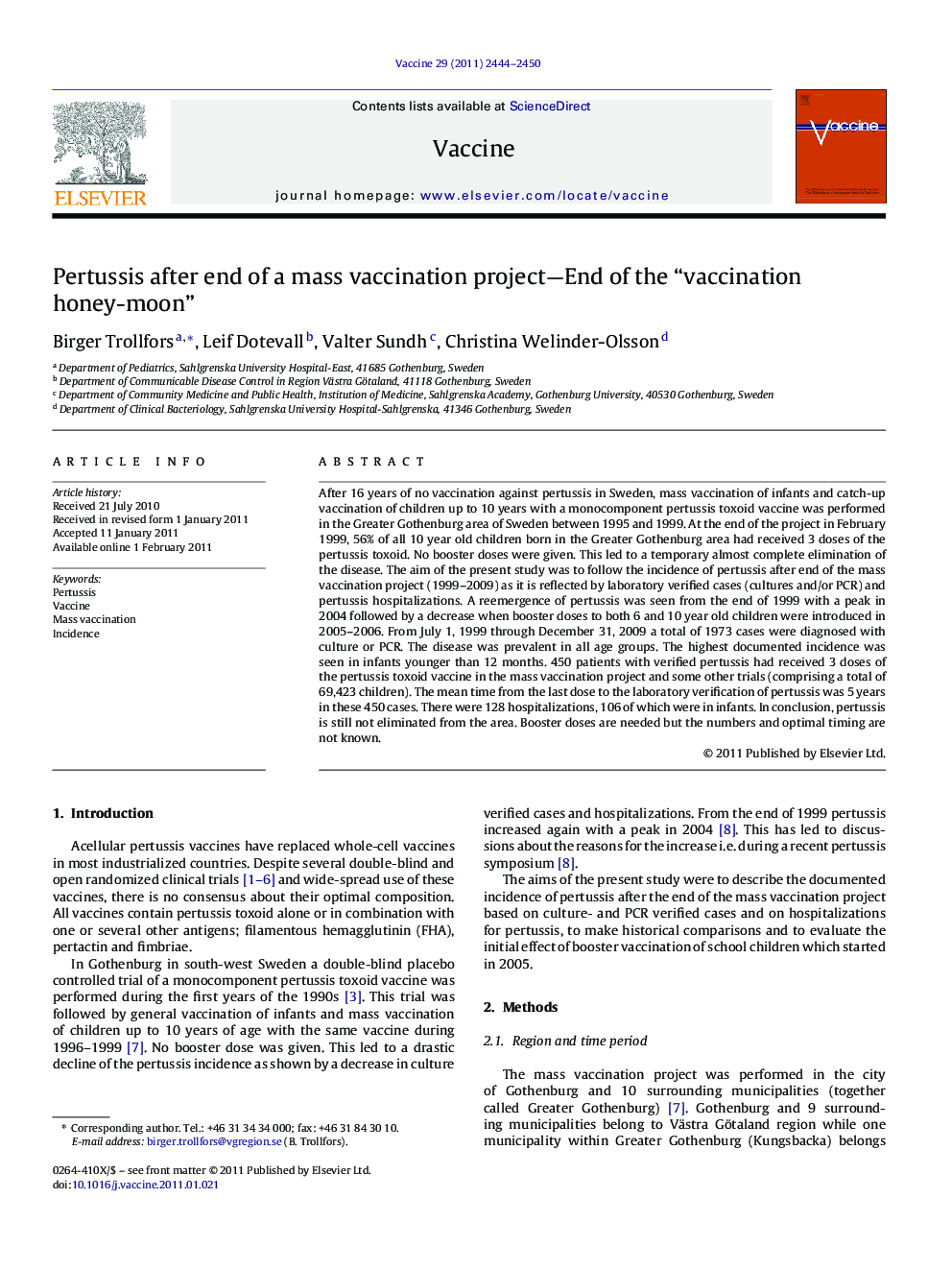| Article ID | Journal | Published Year | Pages | File Type |
|---|---|---|---|---|
| 2405124 | Vaccine | 2011 | 7 Pages |
After 16 years of no vaccination against pertussis in Sweden, mass vaccination of infants and catch-up vaccination of children up to 10 years with a monocomponent pertussis toxoid vaccine was performed in the Greater Gothenburg area of Sweden between 1995 and 1999. At the end of the project in February 1999, 56% of all 10 year old children born in the Greater Gothenburg area had received 3 doses of the pertussis toxoid. No booster doses were given. This led to a temporary almost complete elimination of the disease. The aim of the present study was to follow the incidence of pertussis after end of the mass vaccination project (1999–2009) as it is reflected by laboratory verified cases (cultures and/or PCR) and pertussis hospitalizations. A reemergence of pertussis was seen from the end of 1999 with a peak in 2004 followed by a decrease when booster doses to both 6 and 10 year old children were introduced in 2005–2006. From July 1, 1999 through December 31, 2009 a total of 1973 cases were diagnosed with culture or PCR. The disease was prevalent in all age groups. The highest documented incidence was seen in infants younger than 12 months. 450 patients with verified pertussis had received 3 doses of the pertussis toxoid vaccine in the mass vaccination project and some other trials (comprising a total of 69,423 children). The mean time from the last dose to the laboratory verification of pertussis was 5 years in these 450 cases. There were 128 hospitalizations, 106 of which were in infants. In conclusion, pertussis is still not eliminated from the area. Booster doses are needed but the numbers and optimal timing are not known.
